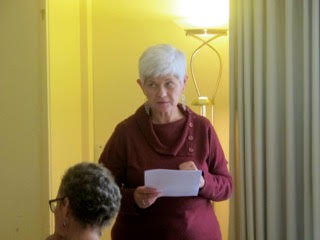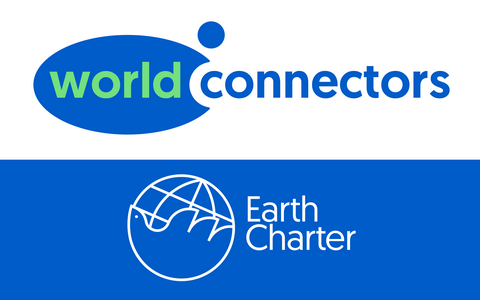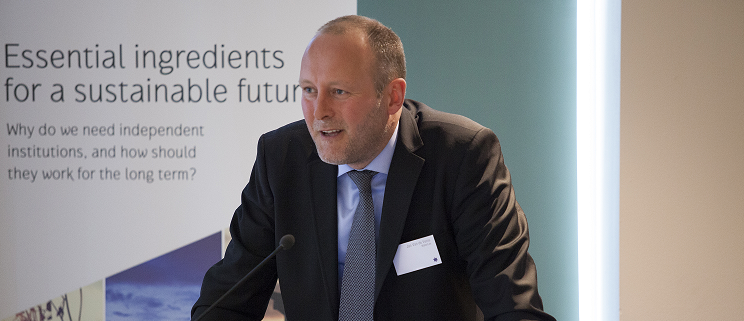In de opmaat naar de VN Klimaattop in Parijs – ook wel COP21 – is het tijd om een stevige oproep te doen voor klimaatgerechtigheid.
Met ‘klimaatgerechtigheid’ (Climate Justice) doel ik op een benadering van klimaatverandering als een ethische kwestie. Klimaatgerechtigheid houdt in dat de oorzaken en gevolgen van klimaatverandering in relatie worden gebracht met rechtvaardigheid, zowel ecologisch als sociaal. Onderwerpen als gelijkwaardigheid, mensenrechten, collectieve rechten en historische verantwoordelijkheid zijn daarbij belangrijke overwegingen.
Klimaatgerechtigheid houdt rekening met het feit dat de meest kwetsbare bevolkingsgroepen, veelal in ontwikkelingslanden, het minst verantwoordelijk zijn voor klimaatverandering in de wereld, en het hardst getroffen worden.
Klimaatgerechtigheid kijkt niet alleen naar maatregelen tegen klimaatverandering middels ‘mitigatie’ van uitstoot, maar ook naar mogelijkheden om kwetsbare bevolkingsgroepen te ondersteunen bij aanpassing aan de effecten van klimaatverandering.
Klimaatgerechtigheid wordt tenslotte ook gebruikt in relatie tot het juridische systeem, met behulp waarvan rechtvaardigheid wordt beoogd door wetgeving op het gebied van klimaatverandering.
Het Earth Charter biedt een breed gedragen mondiaal ethisch kader en bevat vele concrete aanknopingspunten voor klimaatgerechtigheid. Ik denk daarbij bijvoorbeeld aan de opvatting dat ontwikkeling er niet om gaat – nadat aan de basisbehoeften is voldaan – almaar méér te willen hebben, maar veeleer meer te zíjn. Dit is een fundamenteel onderdeel van de culturele verandering die we nodig hebben bij de omslag naar een samenleving waarin gevaarlijke klimaatverandering wordt voorkomen.
Geïnspireerd op het Earth Charter waren er recentelijk twee momenten waarop ik de gelegenheid kreeg om dit thema aan de kaak te stellen:
Het eerste moment was tijdens een bijeenkomst over klimaatverandering in Den Haag, georganiseerd door de werkgeversorganisatie VNO-NCW. Ik was uitgenodigd mijn visie te geven op de voorbereidingen op de Klimaattop, in het licht van het motto van 15 jaar Earth Charter: ‘One Earth Community, One Common Destiny’. In het kader van intergenerationele samenwerking nodigde ik Lavinia Warnars uit, mijn buddy bij de Young Club of Rome, sociaal ondernemer en één van de Earth Charter Vrienden. Ons verhaal was een oproep om klimaatverandering vanuit de holistische benadering van het Earth Charter te bezien en voortaan klimaatgerechtigheid na te streven.
Het tweede moment is nu, met het delen van onderstaand verhaal van Irene Dankelman. Irene is ecoloog en internationaal onderzoeker en publicist rondom gender en klimaat en was te gast tijdens de viering van de seizoenswisseling – van zomer naar herfst – in mijn woonwerkgemeenschap de ‘Homüschumühl’. We genoten van een vegetarische en biologische seizoensmaaltijd, en van haar mooie maar alarmerende verhaal. Ze uit hierin haar zorgen én presenteert tegelijkertijd een hoopvol perspectief, geïnformeerd door het Earth Charter. Ik moedig je aan je reactie hieronder achter te laten, om jouw vragen en perspectief op klimaatgerechtigheid met ons te delen.
Climate Justice knocks at our doors – we cannot hide away from it
 “What should I tell you about the changes in our climate? Has not everything been said last year in the 5,000 pages of the reports of the Intergovernmental Panel on Climate Change (IPPC), to which 235 scientists contributed? Rising temperatures, heavy rains, dramatically dry seasons, and unpredictable weather, it is all documented and predicted in models and books. Phenomena resulting in excessive flooding and wildfires, intensified melting of ice and glaciers, dangerous sea level rise, coastal erosion and heat stress, and consequentially abrupt ànd long-term disasters.
“What should I tell you about the changes in our climate? Has not everything been said last year in the 5,000 pages of the reports of the Intergovernmental Panel on Climate Change (IPPC), to which 235 scientists contributed? Rising temperatures, heavy rains, dramatically dry seasons, and unpredictable weather, it is all documented and predicted in models and books. Phenomena resulting in excessive flooding and wildfires, intensified melting of ice and glaciers, dangerous sea level rise, coastal erosion and heat stress, and consequentially abrupt ànd long-term disasters.
What can I tell you about the scarcity of resources, the failing of crops, the cry for clean water? OR: What can they tell you, the thousands, the millions of people who experience the consequences in their daily lives, day after day? What can they tell you about their struggles and their rights? The women and men, the children, many of whom are living in poorer countries and regions. The people who do not have part in driving these changes, but who have to cope with all its consequences. There is no climate justice in what is happening: Those who suffer most, are those who have the least part in its causes.
Testimony: Satou Diouf, Village of Gadiag, Senegal (in: WEDO, 2008, p.26)
We the women are responsible for feeding our families. The bush has now become a desert shrub in my area and there is nowhere to go to fetch wood…..One day, unable to find enough wood after a long search, I used some branches to cook. Since the wood was not enough, I cut my plastic bassinette in pieces to fuel the fire. My bassinette was gone before I finished cooking. Then I took the wooden bench where I was seated and cut it to feed the fire. That was not enough. I also had to use my bed sheet for the fire so the food could cook. After serving the food, my mother-in-law refused to eat. She said she didn’t think food cooked with plastic bassinette and bed sheet was edible. I told her that if she doesn’t eat, the children would eat her portion. Still, she refused. (see: http://www.wedo.org/wp-content/uploads/hsn-study-final-may-20-2008.pdf, WEDO, 2008. Gender, Climate Change and Human Security: lessons from Bangladesh, Ghana and Senegal. Women’s Environment and Development Organisation, New York.)
Last week I attended a workshop in London of the project BRACED (Building Resilience and Adaptation to Climate Extremes and Disasters), and there again it was underlined by people from Uganda, Sudan, Chad, Myanmar and Burkina Faso: it are often the most vulnerable, often women and children, who are affected most by the changes in climate they are facing – but at the same time they are crucial agents of change.
In Oxfam UK’s project Sisters on the Planet the lives of ordinary women and their families in different parts of the world are showcased. The annual monsoon rains in Bangladesh are getting heavier and more unpredictable. Few people can have encountered a force of nature quite like Sahena Begum. She was quite young when she was elected as chairperson of the local disaster committee. She listens to the news and shares weather information with the community. She helps the villagers and her children to prepare for new disasters. At first there was much resistance to her leadership role, but now she is well respected by her husband, and by the men and women in her village. She keeps on preparing the community for disasters in order to secure a safer future. (see: Oxfam UK, 2008; https://www.youtube.com/watch?v=WqYgDGy8Z4M )
What is happening in our atmosphere?
During the past 130 years temperatures went up by 0.9oC. [The past 30 years have been warmer than all decennia since 1850. Worldwide, also in the Netherlands, 2014 was the warmest year since weather observations started in 1706, and with the summer we have had, we might even exceed that record.] Concentrations of CO2 and methane [and laughing gas] in the atmosphere have increased to levels that have not been measured since the past 800,000 years. Since the pre-industrial time, concentrations of CO2 in the atmosphere have increased with 40% due to the burning of fossil fuels, but also because of changes in land-use (including deforestation, and increased cattle rearing). (see: www.ipcc.ch)
What is needed?
Although by now almost everybody knows that climate change is mainly (hu)manmade, the measures taken so far are still haphazard and predominantly voluntary in nature. We – or rather our governments – have agreed in 2010, that the world should stay below the 2oC increase in temperature (compared to the situation in 1990). For many communities even that 2 degrees limit seems to come with major suffering and distress. For small island states, such as Vanuatu, for example, even an increase of 1.5oC seems to be too much, sea level rise and storm surges will overflow their land and evacuation plans are on alert continuously.
In order to stay below the 2oC limit, emissions of greenhouse gases have to get down dramatically. This means that we need a major shift in the ways we are moving, producing, communicating and warming (or cooling) ourselves. A shift to carbon-poor economies and societies is crucial. This implies not only a spectacular move towards sustainable, alternative energy-production, but first and foremost a massive saving of (our use of) energy. And we most safe our forests and prevent them from being cut or burned down or ‘cattled over’.
Since 2011 my country the Netherlands (and I am sure Germany does the same), follows the EU with its development of a climate-neutral strategic plan and signed an Energy Agreement with multiple stakeholders in 2014. This requires major investments in sustainable technology and making these available and applicable in all sectors of society. But it also demands a major level of societal awareness and support. One wonders if the implementation of these plans is really on track and if we are well aware of what steps have being taken so far? For example: Did you know that in 2014 the UN Decade for Sustainable Energy for All (SE4All, 2014-2024) started? And what are we actually contributing to that process?
What is at stake in Paris?
The United Nations Framework Convention on Climate Change (UNFCCC) – that was agreed in Rio in 1992 – says it as follows: “We have to prevent dangerous interference with the climate system.”
Although the 2 degrees limit was globally agreed, also at that level we are running behind in its realisation. That is why governments agreed in Durban in 2011 to hold a Climate Summit in Paris end of this year (2015). This is needed because the only binding protocol we have to reduce our emissions, the Kyoto Protocol, is limited in scope and will expire in 2020 (after an extension).
Success of the UNFCCC Climate Conference in Paris (COP21) depends on the following four pillars:
- A strong universal climate agreement/convention for 2020 and onwards;
- Adequate and guaranteed national contributions (pledges) towards the aims of the Convention;
- Strengthened/enhanced joint action of governments at all levels (so not only national but also local governments/municipalities) and a broad spectrum of stakeholders;
- And last but not least: increased and adequate funding for mitigation and adaptation actions, particularly in developing countries.
What is happening?
Around the world innumerable local initiatives have been taken to enhance sustainable energy use. For example the organization Solar Sisters, a collective of 1,200 small enterprises working on solar energy, supplies 200,000 users. Solar Sisters tries to tackle energy poverty (a major problem in many developing countries) and at the same time strengthens the economic chances of women. Through ‘light, hope and opportunities’ selling points women [supply] solar lamps and cooking technologies in very isolated communities in Uganda, Tanzania and Rwanda. A similar initiative by Kopernik in Indonesia results in Ms. Ibu Leny in Kalimantan saying: “My household used to utilize two kerosene lamps every night prior to purchasing the daylight solar light. But now, I don’t need my kerosene lamps anymore. I save up to Rp.110,000 (approximately US$10) per month on kerosene, which I use to buy rice, and fuel for my husband’s boat”.
In the Netherlands advocacy organizations such as URGENDA, are active, that hold our government accountable by its filing of a case against governmental policies. Municipalities are active as well: in Nijmegen we have Power2Nijmegen, which intends to make the city climate neutral in 30 years time, by 2045, through co-creation with many stakeholders around energy saving and sustainable energy. In Nijmegen the collective WindPowerNijmegen will supply 7,000 households with wind energy.
During the ICLEI (Local Governments for Sustainability) World Congress in April 2015 36 mayors of big to medium-sized cities signed the Compact of Mayors, and ICLEI launched its ‘Transformative Action Program’ (TAP) to enhance climate action at local and subnational level; the TAP has already received over 100 applications from cities around the world.
The Challenge is our hands:
Next to the many actions in support of the thousands of refugees that enter Europe these days, it is also World Peace Week and the UN Summit on the Post-2015 agenda (Sustainable Development Goals) is going on. Let’s finish this talk with the Earth Charter (2000). Its preamble says : “We stand at a critical moment in Earth’s history, a time when humanity must choose its future. As the world becomes increasingly interdependent and fragile, the future at once holds great peril and great promise. To move forward we must recognize that in the midst of a magnificent diversity of cultures and life forms we are one human family and one Earth community with a common destiny. We must join together to bring forth a sustainable global society founded on respect for nature, universal human rights, economic justice, and a culture of peace. Towards this end, it is imperative that we, the peoples of Earth, declare our responsibility to one another, to the greater community of life, and to future generations.”
Irene Dankelman Homüschemühl, Keeken, Germany, 20 September 2015
 Suriname, het land waar ik ben geboren, als dochter van een Inheemse moeder en een creoolse vader. Wij noemen onszelf niet graag Indianen maar Inheems of Kalinya’s. In Suriname wonen er verschillende Inheemse stammen. De Kalinya’s (Caraïben), de Lokono’s (Arowakken) wonend aan de kuststrook, en de Akoerio, Trio en Wayana wonen meer in het binnenland van Suriname.
Suriname, het land waar ik ben geboren, als dochter van een Inheemse moeder en een creoolse vader. Wij noemen onszelf niet graag Indianen maar Inheems of Kalinya’s. In Suriname wonen er verschillende Inheemse stammen. De Kalinya’s (Caraïben), de Lokono’s (Arowakken) wonend aan de kuststrook, en de Akoerio, Trio en Wayana wonen meer in het binnenland van Suriname.


 zes om een duurzame leefstijl te ontwikkelen en te denken in verbanden en verantwoordelijkheden die verder gaan dan we gewend zijn. Dit vraagt om aanpassingen op het gebied van educatie, voorlichting en productinformatie. We kunnen en moeten ons meer verbinden en hebben de (IT-) mogelijkheden daarvoor. Dat betekent werken aan en vanuit dezelfde waarden en ons verbonden voelen met planeet en medeburgers. Denken in andere termen dan economisch rendement vraagt om een groot paradigma-shift. En kan alleen als we helderheid krijgen over de echte impact van ons handelen en vooral onvermoeibaar zoeken naar de waarheid, dieper graven dan de oppervlakkige beelden waarmee we nu in slaap worden gesust door overheid, bedrijven, media en investeerders. Essentieel is een persoonlijke ethiek bespreekbaar maken, anderen hierop aanspreken, authentiek en integer handelen. Leiderschap is nodig, maar ook dragerschap. Wie neemt de uitdaging aan en geeft het stokje door.
zes om een duurzame leefstijl te ontwikkelen en te denken in verbanden en verantwoordelijkheden die verder gaan dan we gewend zijn. Dit vraagt om aanpassingen op het gebied van educatie, voorlichting en productinformatie. We kunnen en moeten ons meer verbinden en hebben de (IT-) mogelijkheden daarvoor. Dat betekent werken aan en vanuit dezelfde waarden en ons verbonden voelen met planeet en medeburgers. Denken in andere termen dan economisch rendement vraagt om een groot paradigma-shift. En kan alleen als we helderheid krijgen over de echte impact van ons handelen en vooral onvermoeibaar zoeken naar de waarheid, dieper graven dan de oppervlakkige beelden waarmee we nu in slaap worden gesust door overheid, bedrijven, media en investeerders. Essentieel is een persoonlijke ethiek bespreekbaar maken, anderen hierop aanspreken, authentiek en integer handelen. Leiderschap is nodig, maar ook dragerschap. Wie neemt de uitdaging aan en geeft het stokje door.





